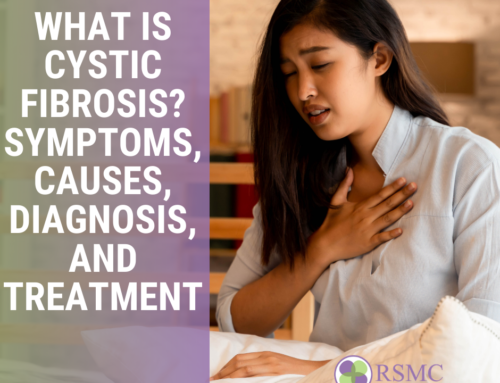There are certain female infertility questions that pop up more frequently than others, especially when people are starting to research infertility. Here’s a list of questions that most people ask first.
1. What is infertility?
Female infertility is defined as a woman not being able to get pregnant after one year of well-timed intercourse if she’s under 35 and 6 months of well-timed intercourse if she’s over 35.
As women get older, fewer eggs are available to conceive, so it’s best to start fertility treatment with the best quality eggs. If a woman is under 35 and can get pregnant, but experiences multiple miscarriages – this is also considered to be a cause of infertility.
2. Male and Female Infertility
Approximately 30% of infertility cases come from women and 30% of cases are contributed to male infertility. However, 40% of infertility cases come from both partners contributing to the issue of not being able to conceive. The majority of women experiencing infertility are over 35 and have not given birth to a child. Also, there is a small group of women who have given birth to their first child but can’t conceive after their firstborn – called secondary infertility.
3. What are the risk factors for female infertility?
Some of the risk factors for female infertility are: age, stress, poor diet, athletic training, being over or underweight, smoking, alcohol use, STDs, tubal disease, endometriosis, DES exposure, disease treatment that can damage the reproductive system (like chemotherapy and radiation for cancer treatment), and health problems that cause hormonal changes.
4. What causes infertility in women?
The leading cause of infertility in women are problems with ovulation and egg quality. Regular ovulation with good quality eggs is one of the most vital steps to achieving a successful pregnancy. Other conditions that can cause infertility are blocked fallopian tubes caused by PID, endometriosis or a previous ectopic pregnancy. Physical problems with the uterus, especially uterine fibroids can also create issues but are less common.
5. What are the signs and symptoms of female infertility?
Often there are no signs or symptoms. The woman has no idea she is infertile until she tries to get pregnant. Generally, she’s been trying not to get pregnant for many years and has succeeded. Since ovulation problems are the leading cause of female infertility the signs of ovulation problems, like irregular or absent periods or very painful periods, are good indicators that female infertility might be a problem.
6. How does age affect a woman’s ability to get pregnant?
Women’s most fertile years are before the age of 30. That’s when her egg quality is still good, egg supply is still adequate, and her ovaries are releasing eggs regularly. This is the reason that most egg donor programs will only accept women up to age 29.
After a woman turns 30 her egg quality decreases. She is more likely to have a miscarriage and is also more likely to have health problems that can interfere with conception and carrying a pregnancy to term.
7. How are fertility problems determined by a doctor?
Finding the cause of female infertility can be a long and drawn-out process involving a lot of testing. The doctor usually starts with a complete history to look for obvious problems. The first thing doctors will look for is regular ovulation, this can be done by a blood test, ultrasound of the ovaries, home ovulation test, or recording her basal body temperature each morning for several months.
If nothing obvious with the ovulation testing appears then the doctor will probably move on to a Hysterosalpingography. This is where a dye is injected into the uterus, so the doctor can see if the dye moves normally through the uterus and into the fallopian tubes.
Blockage in one of the tubes can prevent the egg from passing through or sperm from getting to the egg. If that proves normal, then a Laparoscopy is performed. During a minor surgical procedure, doctors make a small cut in the lower abdomen and insert a laparoscope, so they can check the ovaries, fallopian tubes, and uterus for disease or scarring and endometriosis (uterine lining on the outside of the uterus).
8. Is it necessary to go through a lot of testing before starting fertility treatments?
Testing is expensive and time-consuming. Some people’s insurance doesn’t even cover testing. As a result, some doctors will start treating patients using less invasive procedures before a complete female infertility workup has been done.
Since ovulation problems are so high on the list of possible causes of fertility problems, many doctors will start a patient on a follicle–stimulating hormone drug like Clomid to stimulate the ovaries to produce one or more eggs.
That is followed up with Intrauterine Insemination (IUI) where the sperm, which has been concentrated so there are more healthy sperm swimming around, is delivered directly to the uterus. If this protocol doesn’t work after a couple of months, then most doctors will want a complete fertility work-up before executing more invasive procedures like IVF.
9. How do doctors treat female infertility?
Most cases of female infertility are treated with either drug, surgery, or a combination. If there is blockage in the fallopian tubes it can usually be cleared out by surgery. Endometriosis can also be treated surgically as can some fibroid tumors in the uterus and other uterine problems.
Most of the fertility medications used to treat female infertility are used to stimulate ovulation and increase the chance of multiple eggs being released at once. If minor surgery or medication alone don’t work, then the next step is In Vitro Fertilization (IVF).
During IVF treatment the woman is given ovulation stimulating medication, also known as IVF trigger shot, to harvest eggs. IVF is an invasive and time-consuming procedure but has a high success rate. If the woman’s eggs aren’t deemed viable, but she can carry a child, often a donor egg is used; these eggs come from young, healthy women and fertilize well.
10. How many women are treated for female infertility end up having babies?
About two-thirds of women that are treated for infertility go on to have successful pregnancies resulting in live births. Some of the women who are not successfully treated for infertility become mothers through gestational surrogacy.
This is when a woman carries a child for either a couple, single woman or man and has no genetic relationship to the gestational surrogate that’s carried to the child to term. Another option is becoming a parent through adoption. The road to parenthood is always a journey, but definitely worth it in the end!























